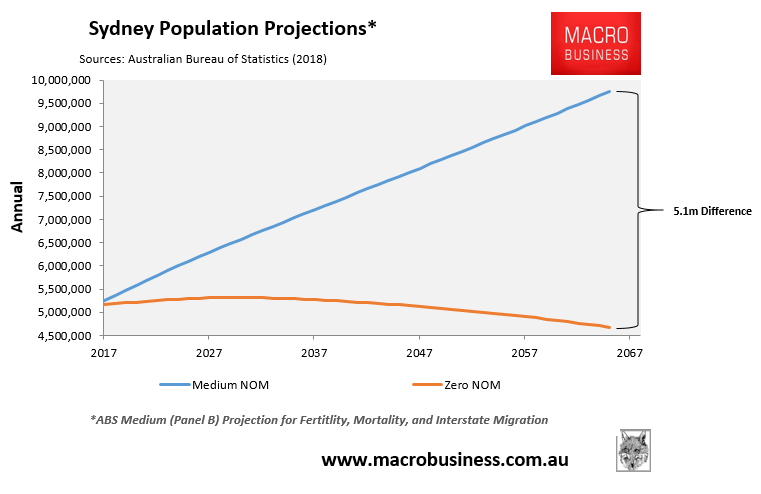Late last year, NSW Premier Gladys Berejiklian proposed four routes for high speed rail (HSR) into Sydney:
A high speed rail project Premier Gladys Berejiklian has committed to start work on if she wins the state election could cost $100 billion… “A reasonable figure would be $100 billion in Australian dollars to build it,” [Committee for Sydney Director of Advocacy James Hulme] said…
Ms Berejiklian announced yesterday that the government would spend $4.6 million investigating four possible high speed rail routes that stretched to Canberra, Goulburn, Newcastle, Gosford, Wollongong and Nowra…
High speed rail would cut the commute time between Sydney and Canberra from over four hours to just one.
A report by the Committee for Sydney concluded that creating a greater connection between Sydney and these regional centres would lead to $75 billion in “housing affordability improvements”.
NSW Premier Gladys Berejiklian has been given a first-hand look at Germany’s high-speed rail network, which if adopted in the state, could slash commuting times to Sydney by 75 per cent…
She said she was impressed by the smooth-running service – which reaches speeds of 300km/h – and could provide a blueprint for a future new NSW network.
“It’s certainly much faster and much smoother (than compared with NSW),” she told 9News…
The high speed train completed the 600kms journey in less than four hours compared with six hours for a conventional service…
The NSW Government wants to start a similar service across the state, with the promise of faster commute times…
It has flagged four future high-speed rail services within 300 kms of Sydney that would slash travel times by 75 per cent…
The journey from Canberra to Sydney would take just one hour, while Sydney to Newcastle would be only 45 minutes and Sydney to Wollongong 30 minutes.
But the planned new service has not been costed and Ms Berejiklian admits it could take years to build.
Gladys’ HSR vision contains a major roadblock: the massive cost of getting from the outskirts of Sydney into the CBD.
These trains are not compatible with suburban commuter trains unless they slow to the same slow speeds due to alignment and congestion, in which case they are no longer HSR. Further, the current commuter train system in Sydney is already at capacity and cannot cope with existing demands, let alone imposing a HSR network.
This means HSR would need to be separated from the existing commuter network via new train lines and stations. And since Sydney is already build-out, this would necessarily require acquiring some of the most expensive capital city real estate in the world or tunnelling under it, either of which would cost a small fortune. Moreover, the geography north of Sydney is incredibly hilly, thus requiring a series of expensive additional tunnels.
Indeed, the German representative in the 9News video stated that it needed to build its HSR line from scratch:
“Basically, we built a completely new stretch of track. Only by having a completely new line built we were really able to straighten the line and achieve higher speeds”.
Finally, the claim by the Committee of Sydney that creating a greater connection between Sydney and these regional centres would lead to $75 billion in “housing affordability improvements” is laughable. Housing affordability could be ‘solved’ with the stroke of a pen and at zero cost to taxpayers by slashing immigration. As noted by the NSW Treasury in November:
Housing Prices and Migration Flows, a NSW Treasury document obtained by The Australian Financial Review, shows Sydney and national house prices would be lower than the forecast trajectory due to fewer migrants.
Under one scenario modelled, a temporary reduction in annual net overseas migration to Australia of 64,000 over five years would cause national house prices to be 7.8 per cent lower and NSW house prices to be 6.8 per cent weaker than a business-as-usual “baseline”.
Instead of making Sydney’s population roughly double in 50 years by force-feeding mass immigration, how about slashing Australia’s immigration intake back to the historical average of 70,000 from circa 200,000 currently, thereby forestalling the need for expensive new infrastructure projects like HSR?


